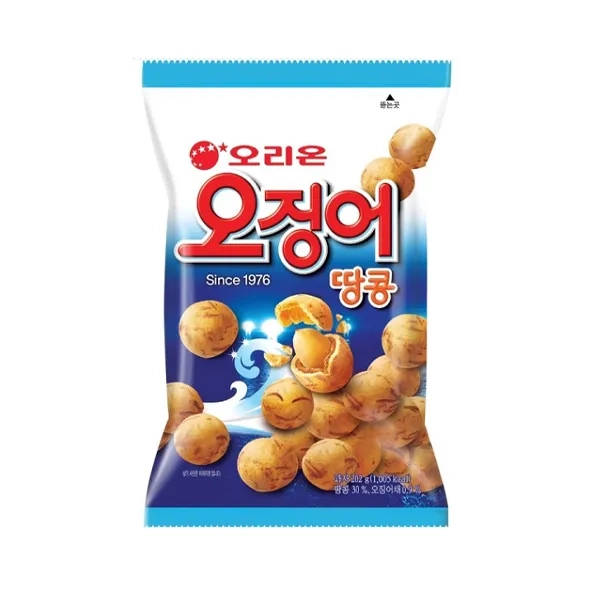
Allergic to Peanuts? Your South Korea Survival Guide
In Korea, allergies aren't as common as in other countries, so people aren't as aware of them. Although peanuts aren't commonly used in Korean cuisine, it's important to take extra precautions if you have a peanut allergy. Here's some vocabulary and phrases to use to order food.
Allergy-Related Lawsuit Cases
During 2017, food allergies got a lot of attention after a big incident at a restaurant. After ordering noodles, a customer with a shellfish allergy asked the staff not to include shrimp. As she ate, she bit into a piece of shrimp and immediately spit it out. As she kept eating, she bit into another piece.

As a result, she had a severe allergic reaction, the breathing problems she was having needed immediate medical attention. Her voice became weak, and even after one month of treatment, she could only whisper. She had to quit her job as a simultaneous interpreter.
Since the situation was so bad, she filed a lawsuit against the restaurant, asking for about 100 million KRW (around 85,000 USD) in damages. The judge ruled in her favor, and ordered the restaurant to pay her about 68 million KRW (around 57,800 USD).
This incident made more people aware of the seriousness of food allergies. Many people started taking food allergies more seriously. But some Koreans still don't know allergies can be life-threatening, and might think allergies aren't that big a deal and just a matter of being picky.
Key Phrases and Vocabulary for Peanut Allergies in Korean
If you're traveling to Korea with a peanut allergy, it's best to know a few key terms and phrases. Here are some key terms and phrases to know.

Peanut 땅콩 (Ttangkong)
Allergy 알레르기 (allereugi)
Peanut allergy 땅콩 알레르기 (Ttangkong-gireum)
Peanut oil 땅콩기름 (Ttangkong-gireum)
I have a peanut allergy.
- 땅콩 알레르기가 있어요. (Ttangkong allereugi-ga isseoyo.)
Is there any peanut in this dish?
- 땅콩이 들어가나요? (Ttangkong-i deureoganayo?)
Do you cook with peanut oil?
- 땅콩기름으로 요리하시나요? (Ttangkong-gireum-euro yo-ri ha-si-na-yo.)
Please, no peanuts in my dish.
- 땅콩 넣지 말아 주세요. (Ttangkong neoji mala juseyo.)
I could die.
- 죽을 수도 있어요. (Jugeul sudo isseoyo.)
Nuts 견과류 (Gyeon-gwalyu)
Nut allergy 견과류 알레르기 (Gyeon-gwalyu allereugi)
I have a nut allergy.
- 견과류 알레르기가 있어요. (Gyeon-gwalyu allereugi-ga isseoyo.)
Is there any nut in this dish?
- 견과류가 들어 있나요? (Gyeon-gwalyu-ga deureo innayo?)
Please, no nuts in my dish.
- 견과류 넣지 말아 주세요. (Gyeon-gwalyu neoji mala juseyo.)
⛔
Allergic reaction - 알레르기 반응 (allereugi baneung)
Hospital - 병원 (byeongwon)
Emergency room - 응급실 (eunggeubsil)
Ambulance (911) - 구급차 (119) (gugeupcha)
Snacks Containing Peanuts
The pictures below show a few snacks and desserts that contain peanuts. Some of them have peanut illustrations, while others have 'peanuts' written in English. They might not be obvious just by looking at them. If you see the word peanut (땅콩 - ttangkong) in Korean, it can be a clue even if it's in fine print or not so obvious.






Foods Containing Peanuts
Here are some Korean foods that have peanuts in them. These foods aren't the only ones that may contain them, so it's important to ask for confirmation before ordering. It's possible that people might not think about it much, so emphasize the severity of your allergy and keep asking for confirmation.
Bars and pubs often serve peanuts as a complimentary snack.
Crushed peanuts are sometimes sprinkled on top of dishes like seasoned chicken (양념치킨- yangnyeom chikin) and sweet and sour chicken (닭강정- dak gang jeong).


- A side dish you might see in restaurants is stir-fried dried anchovies with peanuts (땅콩멸치볶음 - ttangkong myeolchi bokkeum).

- The hotteok (호떡) might be made with just sugar and cinnamon, or it might also contain nuts like sunflower seeds.

- Cold soybean noodle soup Kongguksu (콩국수) is made by grinding beans to make the broth, and it also contains walnuts, almo nds, pine nuts, and peanuts.

- Makgeolli is a traditional Korean rice wine made from fermented rice. Some varieties of makgeolli have added ingredients like peanuts, chestnuts, or corn. Typically, the name of the additional ingredient goes before "makgeolli" - like peanut makgeolli (땅콩 막걸리), chestnut makgeolli (밤 막걸리), or corn makgeolli (옥수수 막걸리).

- You might find peanut sauce (땅콩소스 - ttangkong sosu) in dishes like shabu-shabu, Vietnamese spring rolls, or Chinese hot pot.

Wrap-up
It's tough to travel abroad with allergies. This post hopefully helped you with some tips about traveling to Korea with peanut allergies. In Korea, allergy awareness might not be as high, so it's tricky. You'll need to ask about peanut content frequently. Have a great trip!